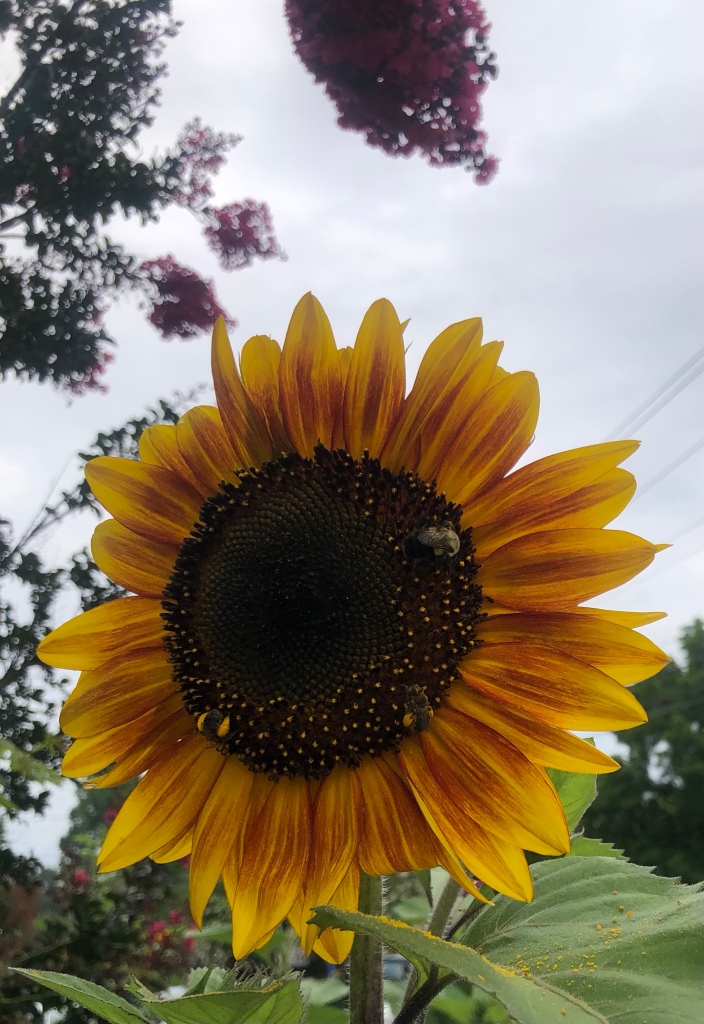“Cooking is an art, but all art requires knowing something about the techniques and materials.”
—Nathan Myrhvold, former Microsoft CTO and author of Modernist Cuisine
At a restaurant during our recent vacation, my health-conscious husband ordered a black bean burger. I don’t recall him ever eating one before. For the better part of his life, he’s been a hearty meat eater. The man loves food…his reaction upon tasting this vegetarian concoction: “AMAZING! I can’t believe how good it is!”
Then, with a subtle batting of his eyes: “I wish you could make these.”
—Was that a throwing down of the gauntlet, at my very feet?
Call it inspiration, determination, seeking to please, or self-challenge, whatever: I decided on the spot. I would do this.
I’ve never made black bean burgers before.
As a rule, I don’t like veggie burgers. They’re mushy. The whole idea of a burger is, you know, substance.
And so I do my research. I find a recipe entitled “The Best Black Bean Burgers I’ve Ever Had.” Seems a reasonably good starting point (why settle for less than the best?).
It doesn’t seem too complicated, really. While I organize and prep the ingredients, however, doubts seep in…if this tastes awful or falls apart, maybe we’ll go get Mexican…
I learn a couple of things in this new undertaking. It’s essential to get as much moisture as possible out of the beans. The drier they are, the better the texture, so the recipe says. Not only do they need to be drained, rinsed, and patted dry, they need to go in the oven on a baking sheet for a few minutes. I discover that cumin, smoked paprika, chili powder, and Worcestershire blended with the dried beans create a surprisingly grilled taste.
One big concern: Will the burgers hold together after baking? Sometimes my regular hamburgers don’t. Not enough bread crumbs, maybe? How did my Grannie ever make those phenomenal, flavorful burgers of my childhood? She could have sold them and made a mint. I’ve never been able to duplicate them. The scent of Worcestershire stirs the memory with a wave of intense longing…
Furthermore, I’ve decided not merely to make these black bean burgers, but to recreate the one my husband thought was so amazing. I’ve looked up the restaurant menu for the toppings: avocado, tomato, arugula, red onion, spicy mayonnaise.
— What IS spicy mayonnaise?
More Googling. Mayo mixed with hot sauce, apparently.
“Hey,” I say to my husband, who’s washing his hands after cheerfully helping to shape the patties for baking, “pick the hot sauce you want to go in this ‘spicy mayonnaise.'”
He has a whole collection of hot sauces.
He picks Texas Pete.
All righty then.
And, if nothing else turns out…we do have gorgeous homegrown tomatoes that have been given to us. They are another reason I love summer, these tomatoes. I think, as I slice into their luscious redness: We could just have cheese and tomato sandwiches in case of disaster…
My husband has also chosen Brioche buns: “The bread at the restaurant was really, really soft.”
We take the burgers out of the oven and—wonder of wonders!—they hold together when we lift them off the pan.
I put them on the buns, layer on the toppings. They’re pretty, but the final test awaits…
My husband takes a bite.
He closes his eyes.
“This is the BEST. THING. I. HAVE. EVER. HAD.”
High praise from my former give-me-steak-and-fries guy.
He eats every blessed crumb for the next three meals.
—Mission accomplished.
The black beans combined with finely chopped onion and green pepper create good texture, much like a tender hamburger.
Pretty proud of my culinary work.
*******
As an educator I could make many analogies between this experience and teaching or writing. We see effective or impactful things that we wish to duplicate. Things we’ve not tried before. It’s daunting. Risk of failure is involved. So is risk of succeeding, if you will. There’s an art and science to writing and teaching, just as with cooking. Myhrvold’s quote on knowledge of techniques and materials at the top of this post struck me as foundational; this is the beginning of process. Knowledge combined with a spirit open to experiment can yield surprising results and discoveries; what you experience and create will not be exactly like your model nor a complete replication what others have done before you. It shouldn’t be. You are making something your own. The work reflects the uniqueness of the artist.
Wishing sustained strength and inspiration to all my fellow teachers preparing to return to school with the residual effects of 2020 still lingering. Here’s to aiming for the best. And to our own learning.
with thanks to Two Writing Teachers and the Slice of Life writing community, ever a safe, nourishing place for creative strivings and growth.







